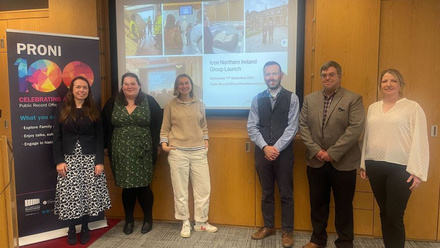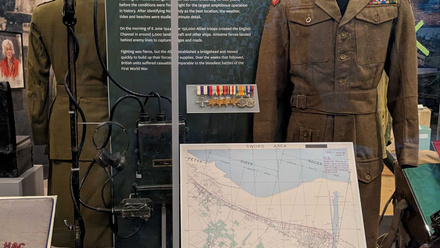Icon member Caroline Bendix ACR is a library conservator, who has worked on over 500 collections in the UK and abroad, including St Catherine’s Monastery, Sinai, advising on all aspects of books’ care in situ. In 2019 she was awarded the Plowden Medal for her “outstanding work in developing in-situ library conservation”. Since 1992 she has been the National Trust’s Adviser on Libraries Conservation, the adviser and trainer for Arts Society Heritage Volunteers projects and is on the Archbishop of Canterbury’s advisory panel for Lambeth Palace Library. She has also written three of the British Library’s guides on preservation.
Below, she talks about a recent project stabilising the books at Oriel College in Oxford prior to a move.
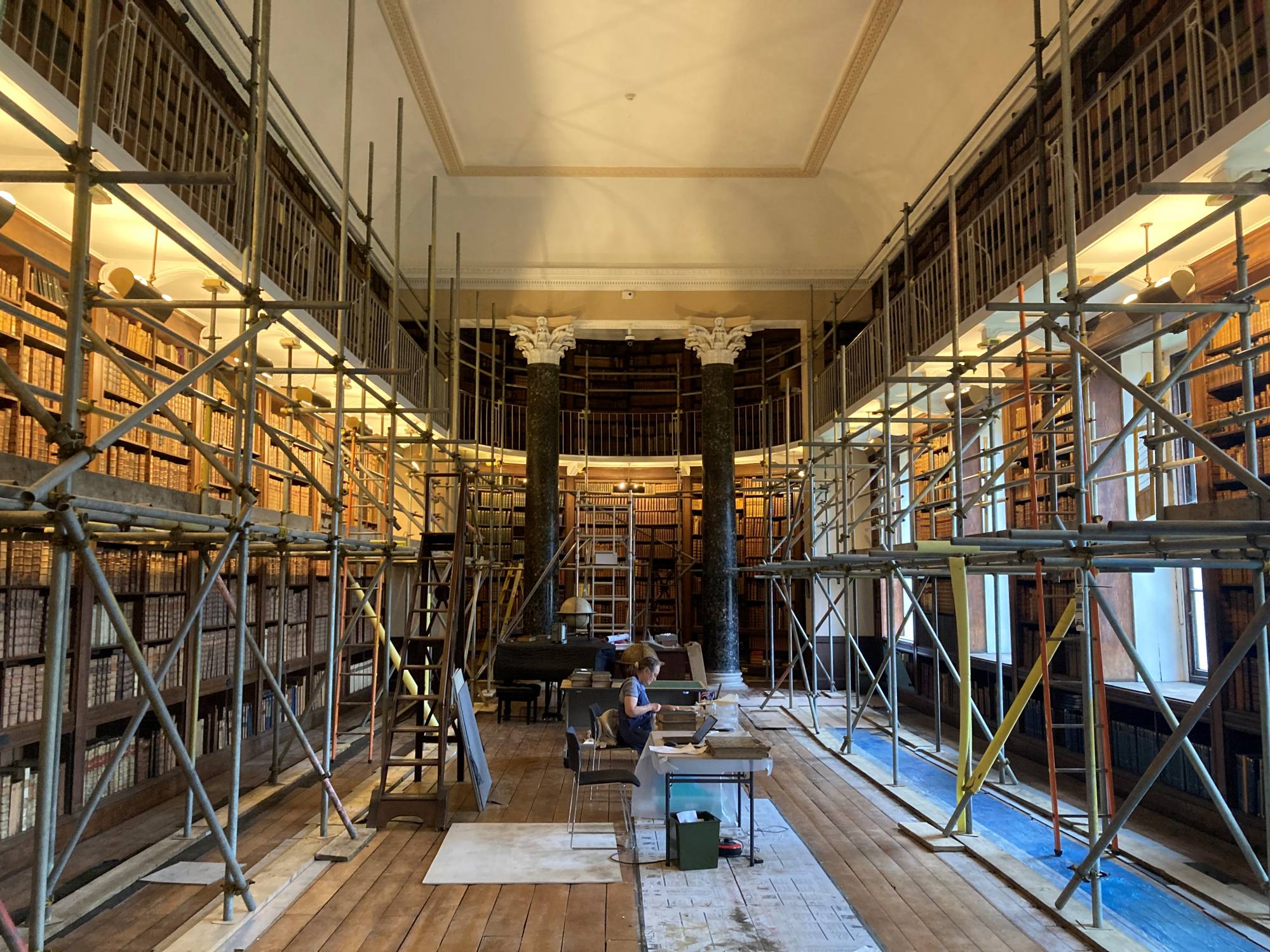
The Senior Library at Oriel College, Oxford comprises a large first floor room with a gallery and another room leading off the gallery; its contents, a collection of some 13,500 – 14,000 books dating from the C16 – C19, needed to be moved to storage while the building is renovated.
Hannah Robertson, the College Librarian, asked me to look at the collection and advise on conservation work that might be needed prior to the move, and conservation needs once the books have been reinstalled after the renovation.
I spent two days looking at the collection and was able to provide a reasonably accurate count of the number of volumes involved, identify issues of concern, such as areas of the room with mould on some books, as well as issues to do with the stability of the bookshelves, and also devise, quantify and cost out a programme of pre-decant stabilisation.
The aim of the work was to enable the more vulnerable books to be moved with a reduced chance of damage from, e.g. lifting covering materials becoming folded or torn and then being compressed in a crate or box, and disassociation of pieces of books, such as spine labels and detached boards.
I asked Ruth Stevens of the Sussex Conservation Consortium to help me carry out the work and together we spent 17.5 conservator days on site, or 123 conservator hours, during which we treated 791 books, carrying out 934 treatments (we are claiming a record!), as follows:
|
Treatment |
Total |
|
Loose endband repair |
28 |
|
Spine label reattachment |
119 |
|
Split hollow spine repair |
213 |
|
Pasting down lifting covering materials |
258 |
|
Tying with tapes books with detached boards |
285 |
|
4-flap wrappers |
9 |
|
Melinex jackets/wrappers |
22 |
|
Total |
934 |
|
No. of books treated |
791 |
This equates to one book every 9.3 minutes, which included time for setting up and packing away our pop-up conservation workspace in two different rooms, retrieving books from and replacing them back in the shelves, carrying out repairs and basic documentation using an Excel spreadsheet, and working around the scaffolders for the first week.
In addition, 55 books were identified as needing a phase-box, which were measured by the Oxford Conservation Consortium and the boxes will be made by PADS at the Bodleian Library.
We could have achieved even more repairs if our original plan to have a mobile workstation on two trolleys when doing the books in the gallery had been possible.
Unfortunately, the scaffolding necessary to support the gallery before we could use the trollies on it took rather longer than expected and because the main floor of the library was inaccessible while the scaffolding was being erected, we had to work on the gallery books first; as a result, we walked miles each day as we fetched and returned books to be treated.
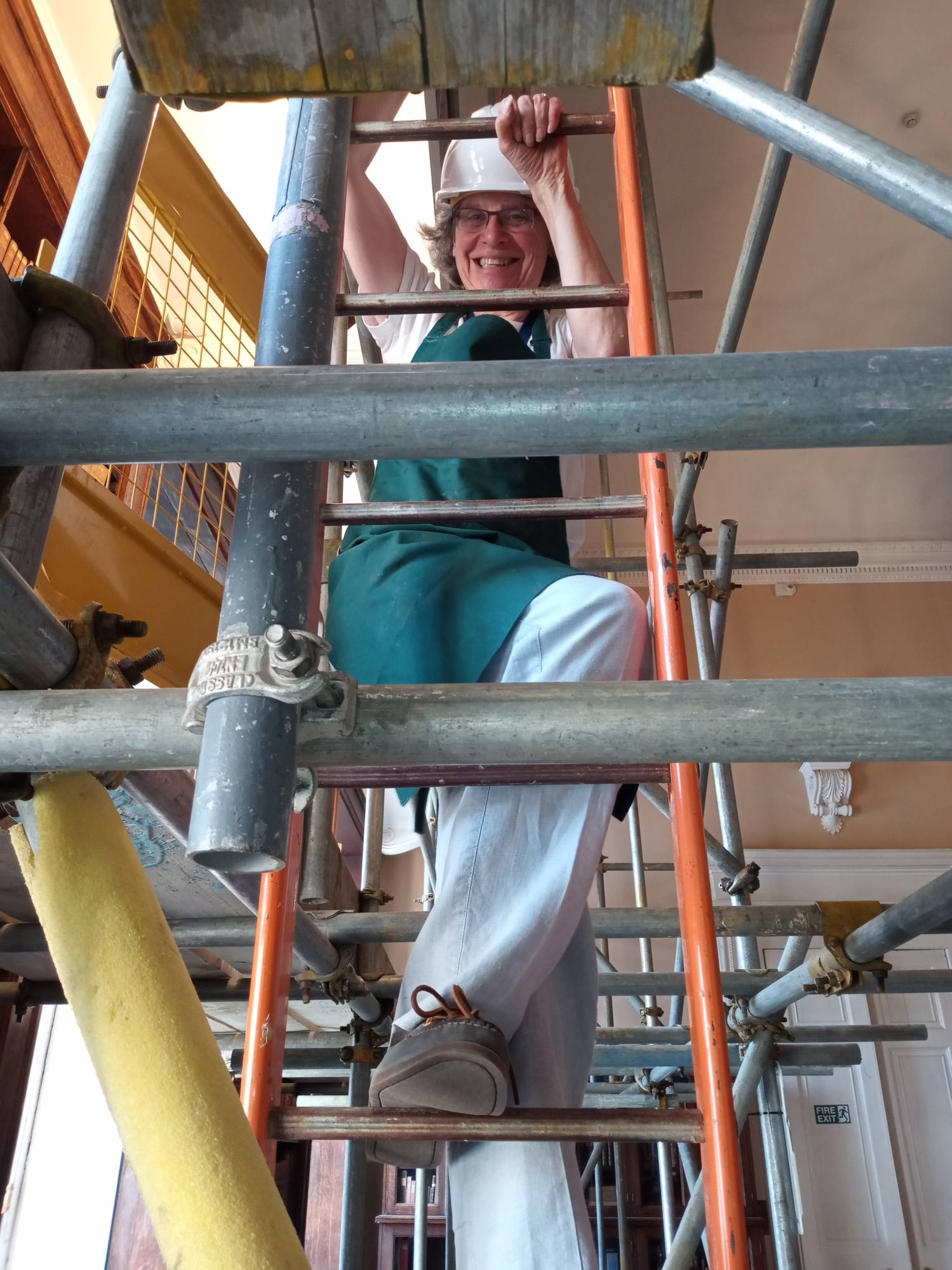
The books have been moved by Jamie Briggs and his team and because of the preparatory conservation, fewer books needed wrapping individually and the health and safety issues associated with mould were identified well in advance.
In addition, a leak sometime in the past had resulted in several books being very mouldy and stuck together, which were identified as we carried out the conservation, and they were sent to Harwell Restoration.
In a short space of time the difference to the stability of the books was noticeable, with the ‘Grizzly Greens’ – a collection of C19 green bookcloth-bound books in a lamentable state – better in appearance and with the ability to cope with handling.
This project demonstrates how small, in-situ, targeted, conservation treatments can have a big and positive impact on a collection and is work whose benefit continues well beyond the renovation project.
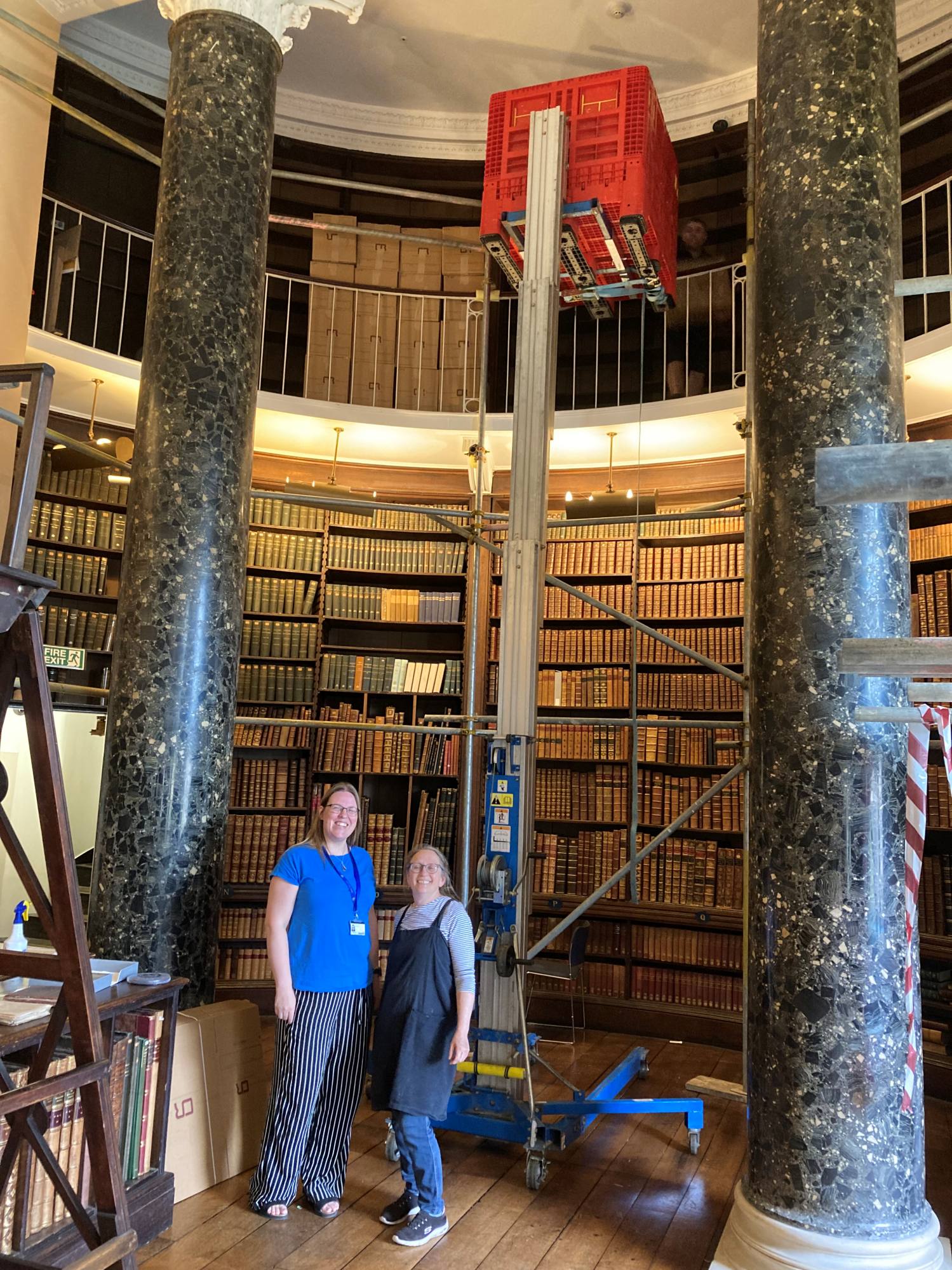
With thanks to Hannah Roberston and Ruth Stevens for their help with this article.











